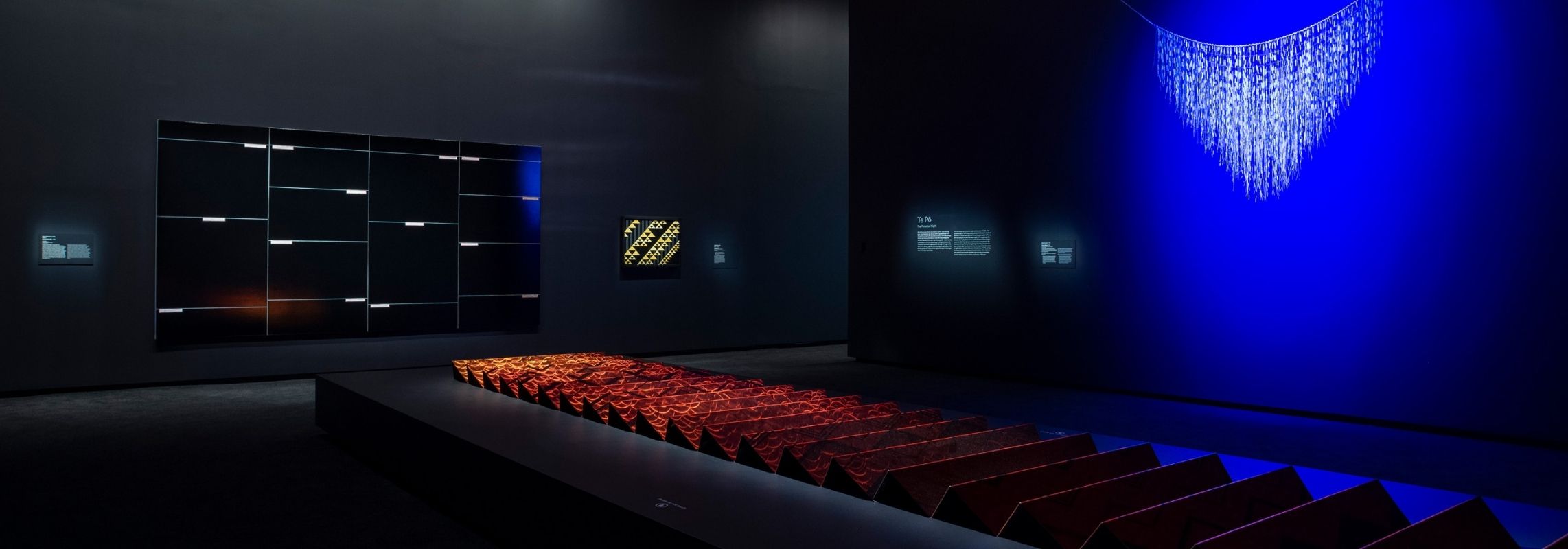—

exhibition Details
Te Kore – The Great Nothingness, the Empty Void
All cultures recall creation narratives that speak to universal questions about human existence and our place within the order of all things. The Māori creation story is the oldest philosophy of Aotearoa New Zealand and articulates the origin stories that Māori still recall and observe today. This begins in the state of Te Kore, described as the great nothingness – the empty faceless void. In Te Kore there is nothing above, nothing below. Time is suspended in darkness – in a state of latent being and unrealised potential. This gallery includes artworks that consider these monumental ideas about nothingness and being in powerful and provocative ways. The works suggest an open-ended conversation to contemplate grand narratives about the celestial realm, cosmology and creation.
Te Pō – The Perpetual Night
From the empty void comes the night and the realm of Te Pō – the perpetual night. Te Pō’s long solitary periods are flooded in shades of darkness: Te Pō (the dark night); Te Pō-nui (the great night); Te Pō-roa (the long night); Te Pō-uriuri (the deep night); Te Pō-tangotango (the intensely dark night). These are the names of a place where no light exists. However, within this darkness come moments of movement – the conscious stirring of being, the beginnings of a change towards the realm of becoming. The artworks in this room explore the dimensions of night, shadow and form that exist in the darkness of Te Pō to explore concepts about states of being and ideas about a transformation which is starting to take place. Within the final state of Te Pō-tahuri-mai-ki-taiao (the night of turning towards the revealed world) we start to see the restless movements of life begin.
Te Wehenga o Ranginui raua ko Papatūānuku – The Separation of Ranginui and Papatūānuku
Within the realm of Te Pō our celestial parents, Ranginui (Sky Father) and Papatūānuku (Earth Mother), lay together in a tight embrace with their children nestled tightly between them. Longing for more room and freedom to move, the children each tried to separate their parents, but without success. It was not until their son Tāne attempted the feat by pushing Ranginui aloft with his legs while his shoulders and arms held Papatūānuku below that the two parents were successfully separated. This act allowed for Te Ao Mārama (the world of light and life) to come into being, giving Tāne and his brothers room to move, explore and grow. In this room you see artworks that recall the power of this creation story. They tell of the embrace Ranginui and Papatūānuku share and the role their son Tāne played in bringing forward Te Ao Mārama for humankind.
Te Ao Mārama – The World of Light and Life
When Tāne separated his parents he introduced Te Ao Mārama (the world of light and life) – the world within which we live today. In Te Ao Mārama Tāne and his brothers flourished. Tāne is the most celebrated of the Māori deities, with his exploits and gifts reflected in the many names and roles he holds: Tāne Mahuta (god of the forest); Tāne-nui-a-Rangi (the great son of Ranginui); Tāne-te-Waiora (Tāne who gives life, prosperity, welfare and sunlight); Tāne-Whakapiripiri (Tāne the protector who offers shelter). With over 50 recalled names and deeds, Tāne is the supreme god and son of Ranginui and Papatūānuku. In this room we see works paying tribute to the importance of Tāne and Te Ao Mārama. These works recall deeds that include fashioning the first woman, Hine-ahu-one, from kurawaka, sacred red clay. Tāne’s union with Hine-ahu-one creates Hine-tītama, the first born being of the dawn.
- Date
- —
- Curated by
- Nigel Borell
- Location
- Gibbs Galleries & Mace Galleries
- Cost
- FREE